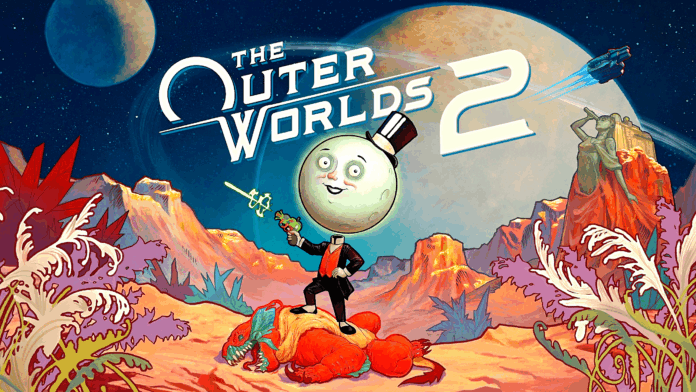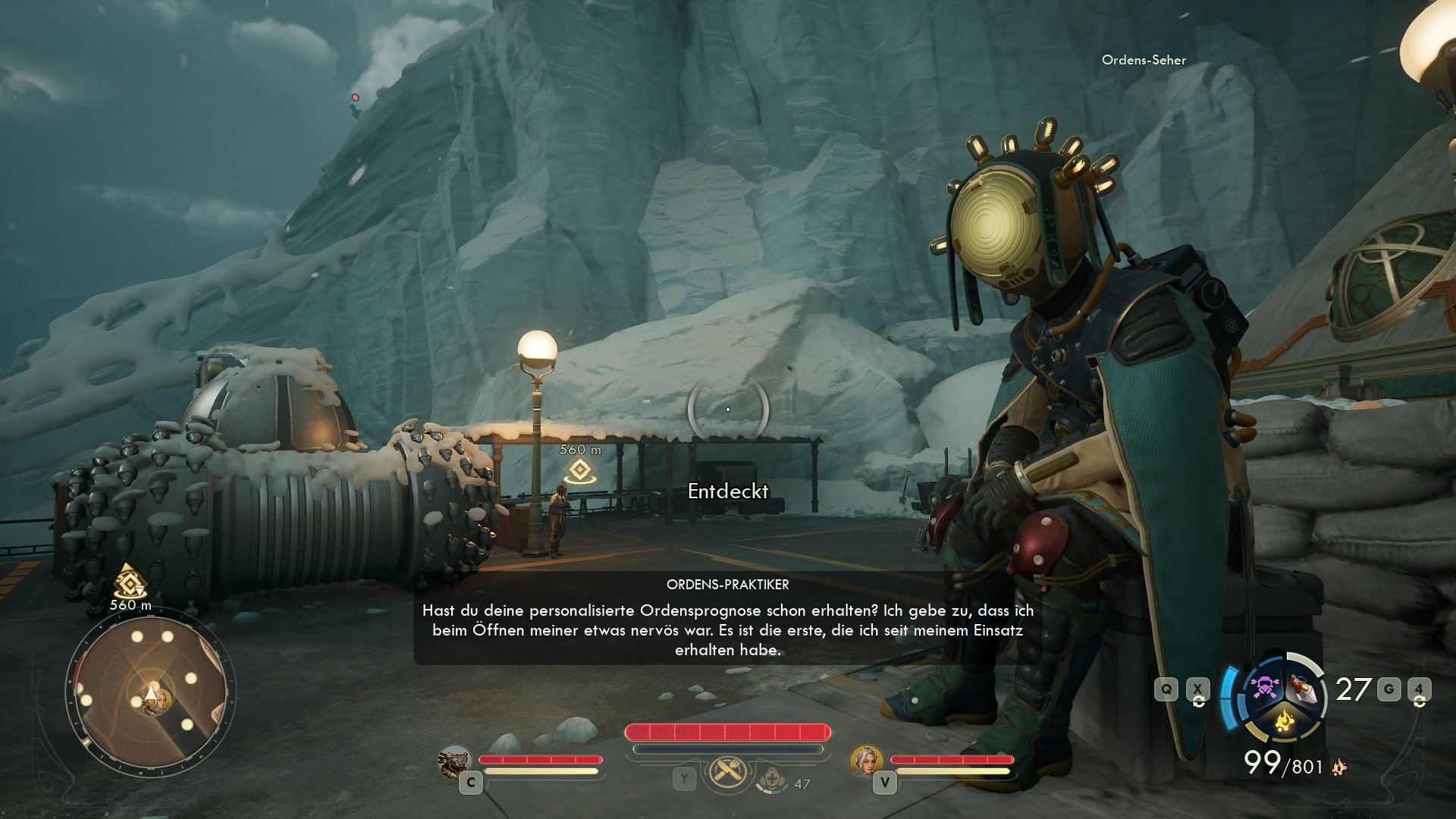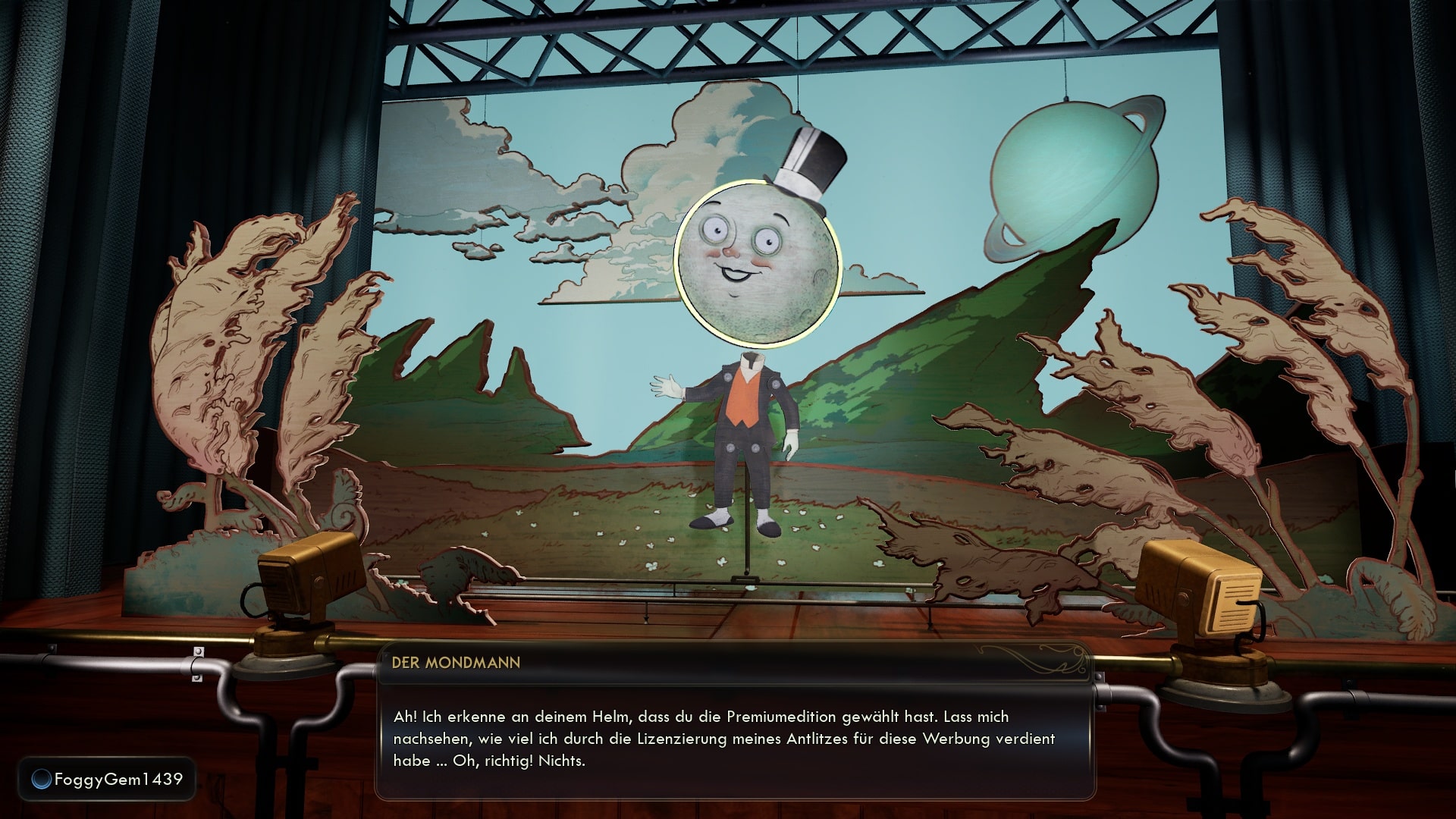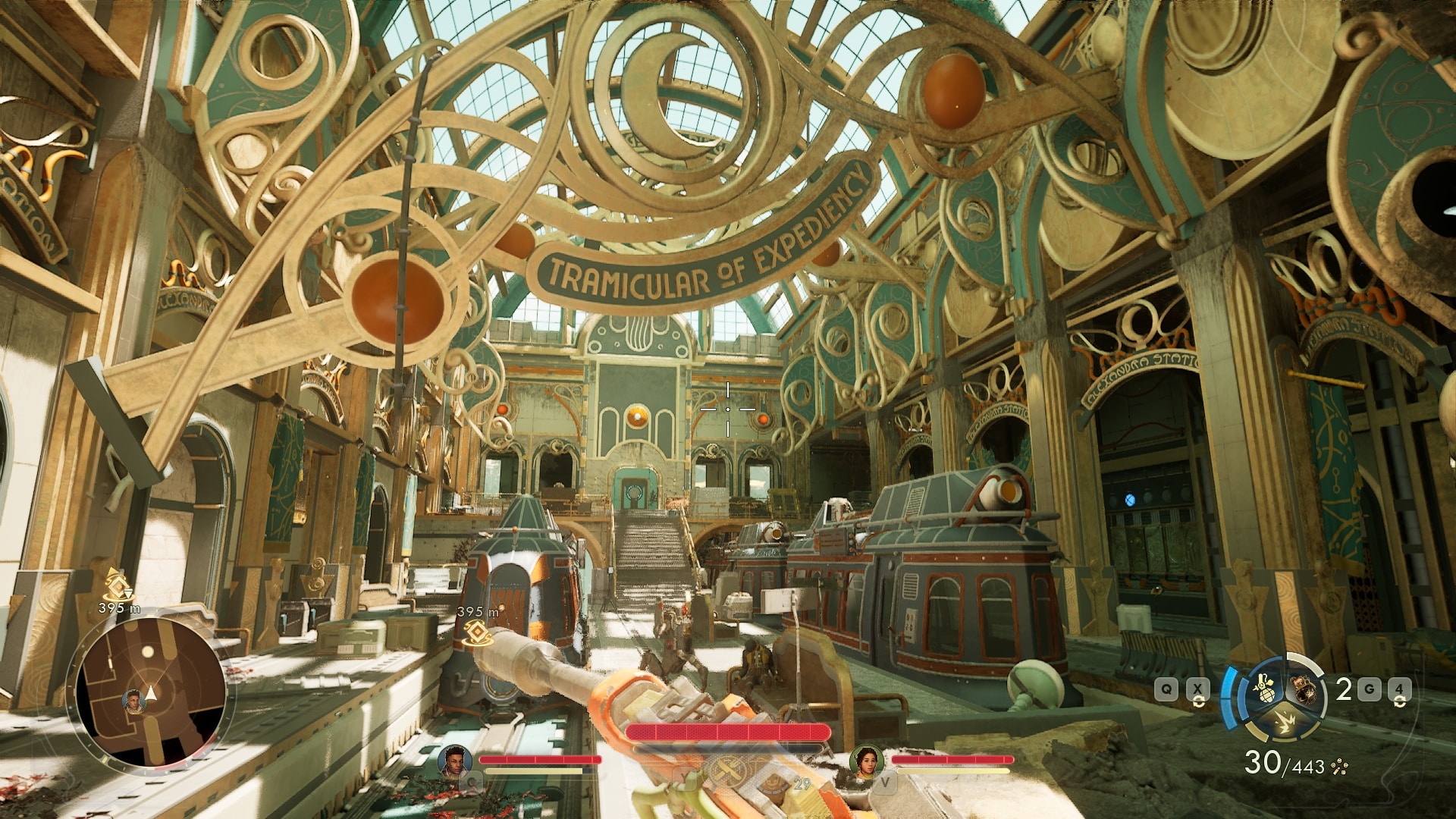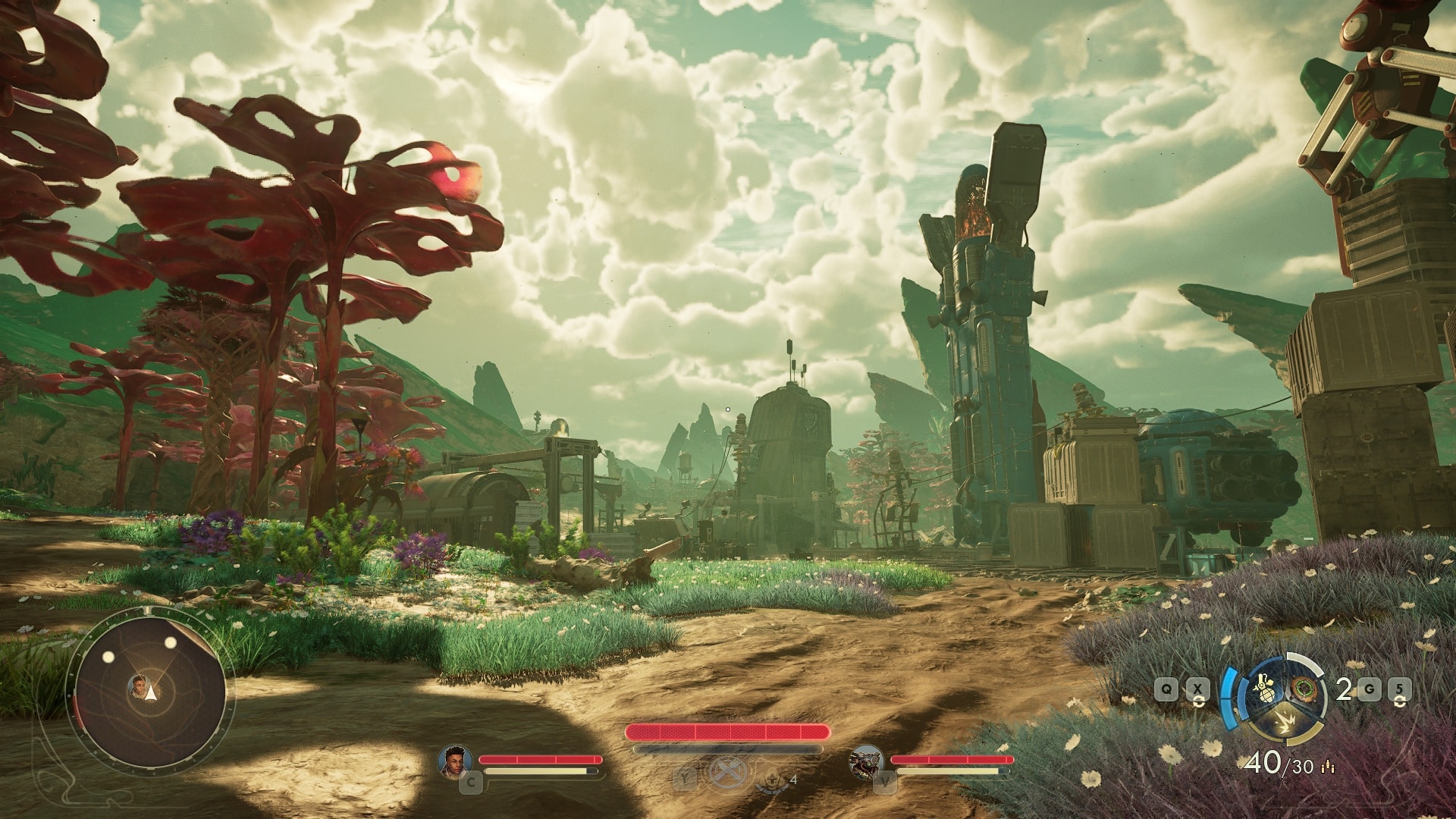Don’t have 300 hours to spare for Baldur’s Gate 3, but still want a deep RPG? Then The Outer Worlds 2 lets you play your very own character.
In 2019, traditional RPG developer Obsidian Entertainment proved with its sci-fi western The Outer Worlds that “bigger is not always better,” even in the RPG genre, where you often have to sacrifice your annual vacation for new AAA titles.
With a manageable budget and compact playing time, the game from the makers of New Vegas, which never denied its Fallout roots, offered an original, funny, and well-written RPG. It impressed with its playful freedom – but showed weaknesses in quest variety and main storyline.
Six years later, the sequel, The Outer Worlds 2, is now here to send us to another front in a separate story: the Arcadia system, which is shaken by a conflict between the fascist protectorate, the religious mathematicians of the Order of Ascension, and the turbo-capitalists of the mega-corporation Auntie’s Choice.
First things first: Once again, there are numerous factions with conflicting interests, plenty of freedom of choice, and absurd humor.& nbsp;But can The Outer Worlds 2 iron out the weaknesses of its predecessor? The GlobalESportNews test provides the answer.
Role-playing taken literally
As commander of the Earth Directorate, a rather second-rate galactic intelligence service, we are tasked with flying our no longer TÜV-compliant spaceship to a research station of the Protectorate and infiltrating it.
Information about a mysterious phenomenon is believed to be located there: dangerous, matter-devouring rifts have recently been opening up all over space. Is there a connection to the Protectorate’s jump drives used for interstellar travel? But the mission goes awry, an explosion occurs, and we drift through space, frozen, for a decade before our sole surviving crew member finds us.
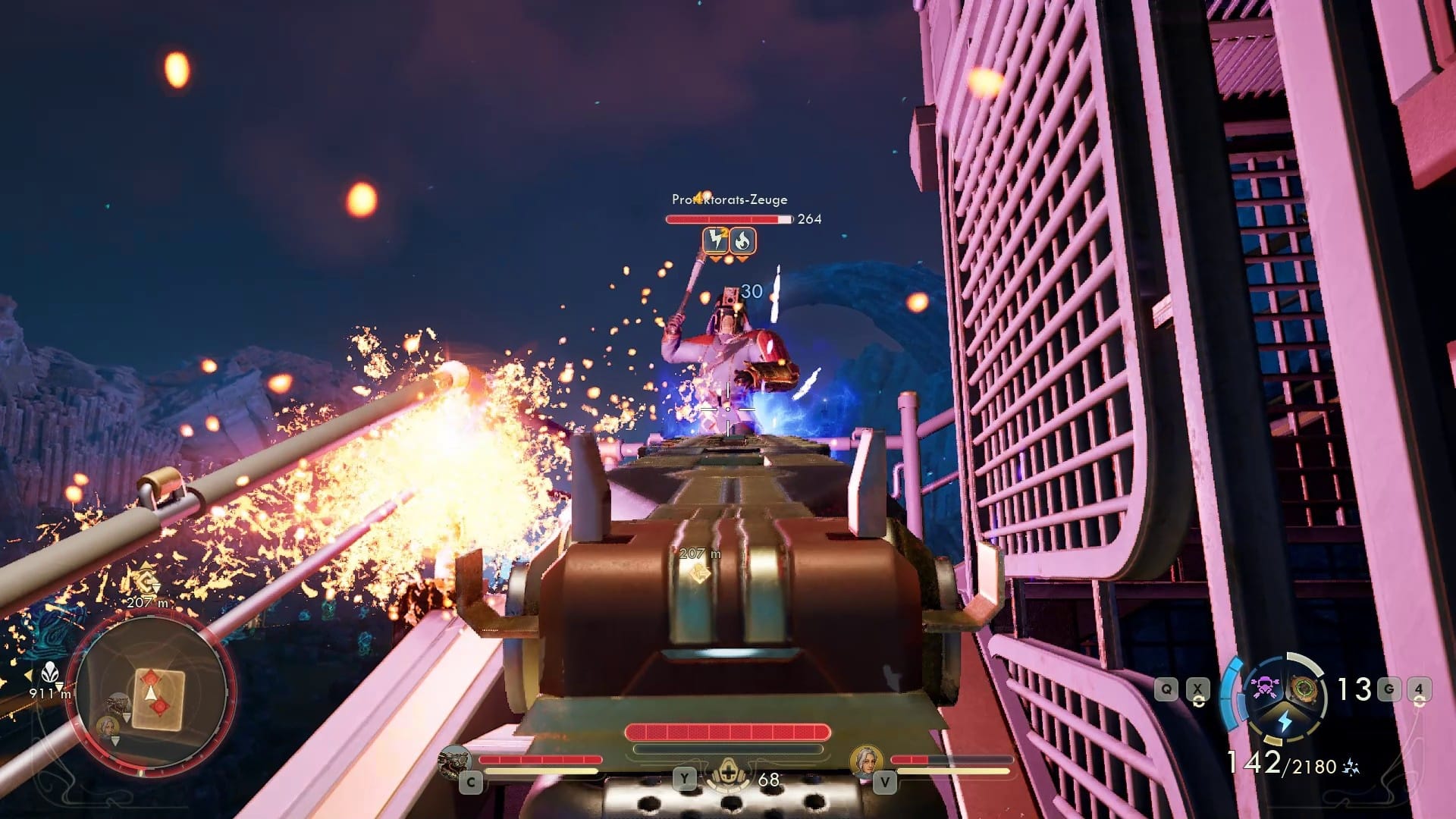
From here, a story unfolds, narrated by English speakers with German subtitles, full of political intrigue, treacherous feints, and absurd twists and turns between the three parties in conflict. In the course of the story, we will not only kill (or forgive) the villain responsible for the death of our crew members, but also prevent (or fuel) a system-wide war (or fuel) and attempt to defeat (or profit from) the threat posed by the growing rifts in space. Because how exactly the narrative unfolds depends on our decisions.
This is where The Outer Worlds 2’s greatest strength lies: it takes role-playing seriously, not in the sense of min-maxing and skill point grinding, but as a role that we shape as we play. In doing so, it gives us more freedom than most other games in the genre.
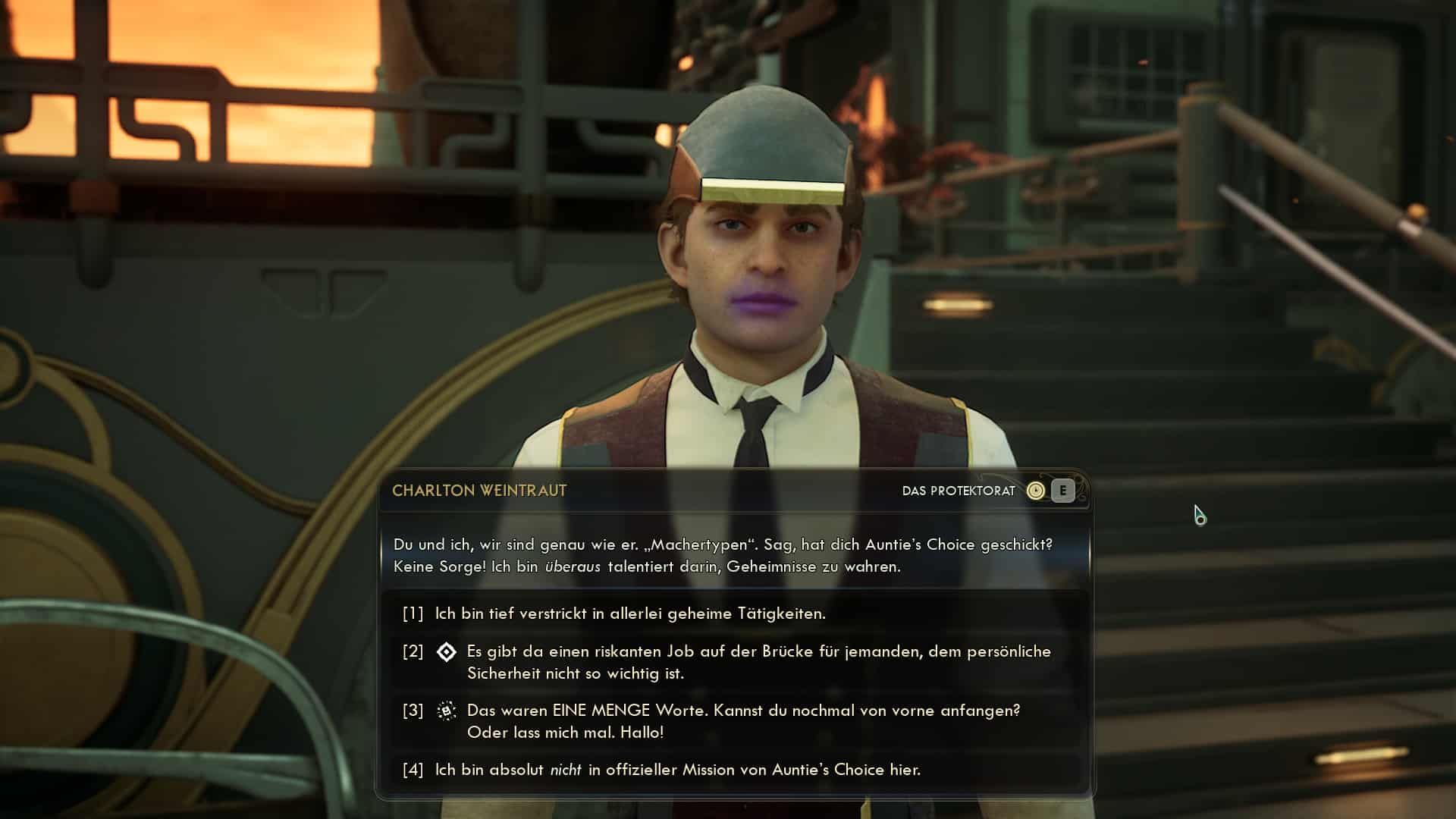
For example, one of our characters was a completely clueless dandy who is mistaken for a hero, is an inhaler junkie and consumerist, fights chronically unfairly, and constantly suffers spontaneous damage and becomes invisible due to a radiation lab accident.
This resulted in plenty of situational comedy in dialogues, such as when the crew wanted to celebrate their victory in a dangerous mission, but my hero preferred to discuss how sore his hands had become at the last Balltontier Knoten party. Or when scientists explained the details of a technical device to him – and he pretended he had completely forgotten where we were and what he was doing there.
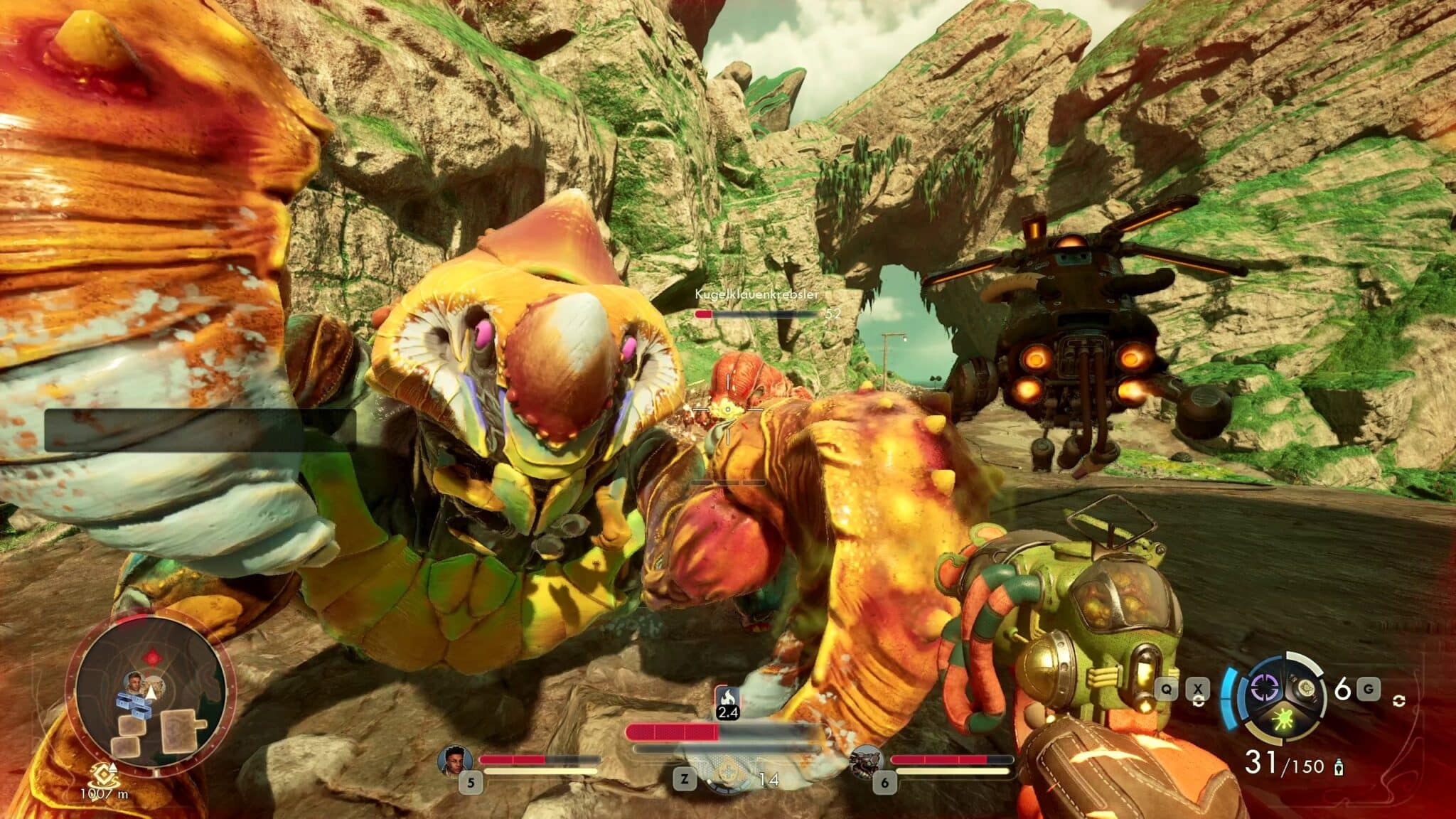
But we could just as easily have played a noble and eloquent space ranger. Or a corrupt ex-convict who couldn’t care less about the affairs of the Earth Directorate. The game adapts to these decisions. Often, in dialogues, we had the impulse (learned in other RPGs) to choose the answer that seemed “right” to us – but then we ended up choosing the more absurd options, which often made us laugh out loud.
Unlike in other role-playing games, we never felt a hint of FOMO. Because Outer Worlds 2 doesn’t favor any particular path; even the silliest answer always takes us further. In the end, we even powered up an additional skill that makes NPCs believe even the most absurd lies. Dialogue is at least as important as combat in this game: more than once, we simply talked our way past a boss fight. border-left: gray 1px solid” height=”315″ src=”https://www.youtube.com/embed/zA5ZE9uy9uI” frameborder=”0″ width=”560″ allowfullscreen=”allowfullscreen”>
Strengths: Weaknesses
In terms of gameplay, this creative freedom is based not only on our character’s backgrounds, traits, and skills, but above all on their weaknesses: The Outer Worlds 2 constantly analyzes our playing style and offers us weaknesses during the game that we can accept or reject.
When we sneak into a fortress of the protectorate of all-powerful space Nazis, completely underleveled, we resort to a cowardly tactic: hide in the air shaft, open fire, return to the air shaft, fire again from cover, and take them out one by one. Promptly, the game offers us the weakness “Treacherous” with the comment “You’re not made for fair fights”: Your own life energy is reduced, but enemies lose sight of you more quickly and suffer more damage from sneak attacks.
Incidentally, the rough edges that the character acquires in the course of the game are also evident in the NPCs. In The Outer Worlds 2, we constantly encounter colorful characters: for example, the elite soldier who has a third arm transplanted onto her back by her regime, which almost kills her. Or the completely untalented wannabe Rüdiger Nehberg, who does survival training on a permafrost moon but can only open a tin can with the utmost concentration. Or an AI that monitors the largest archive in the universe – but unfortunately suffers from multiple personality disorder.
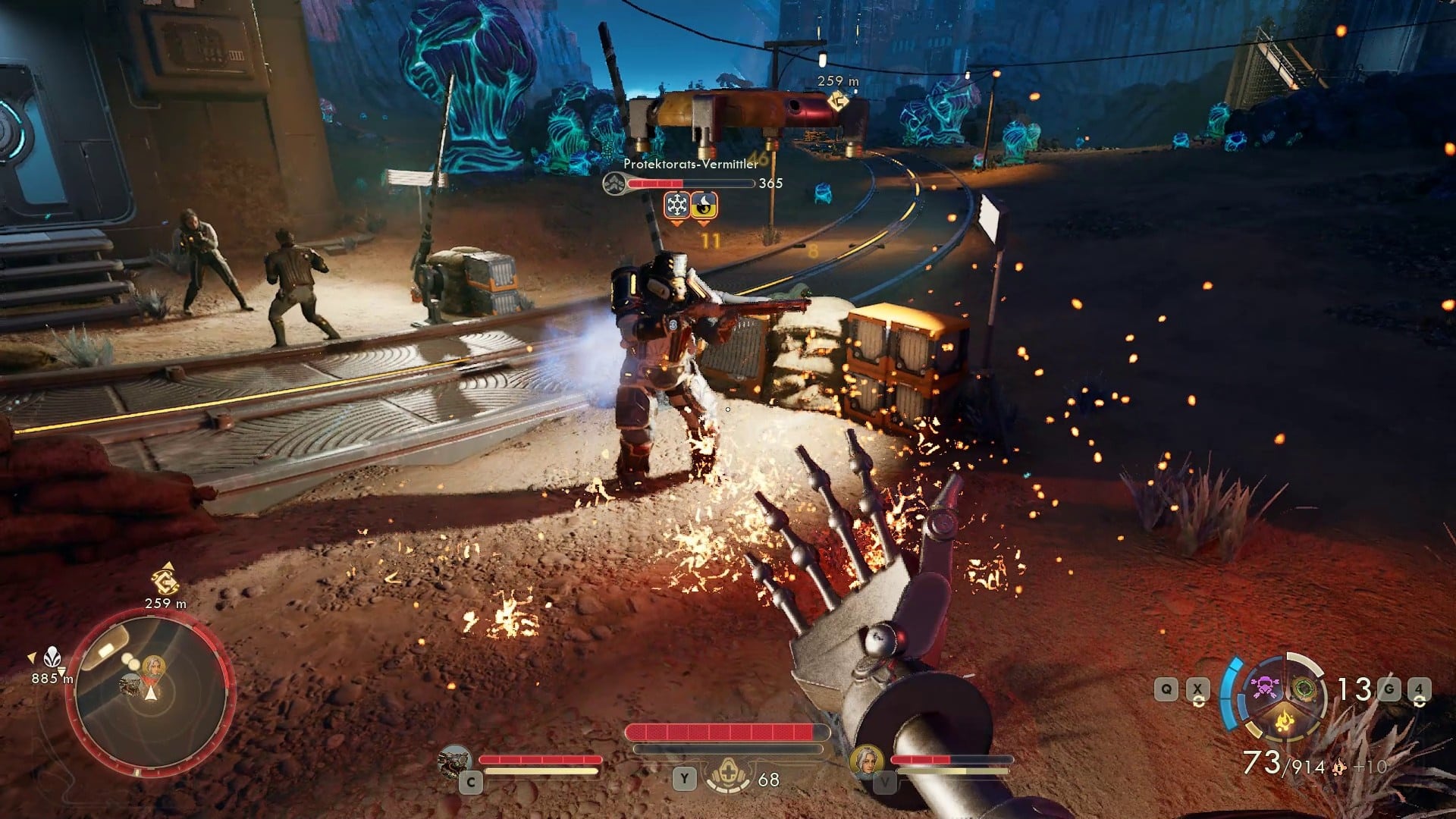
Unlike in the previous game, not only are the characters varied, but so are the numerous side missions: they range from classic shoot-’em-up and delivery quests to detective work and jump & run missions to mediating a video conference between two quarreling faction leaders. The missions, like the well-written dialogues, are designed with a great deal of humor.
In a memorable and on a historical model, we have to take care of a military fort that, as a joke, appointed a giant insect named ‘Wojtek’ as a soldier and kept promoting him in order to obtain larger ration allocations.
Until Wojtek becomes the highest-ranking officer and starts eating his subordinates. Although his (human) assistant insists that he has been able to communicate with Wojtek since the implantation of an insect antenna and understands that this is simply his tough leadership style, the army leadership has its doubts and wants us to restore order.
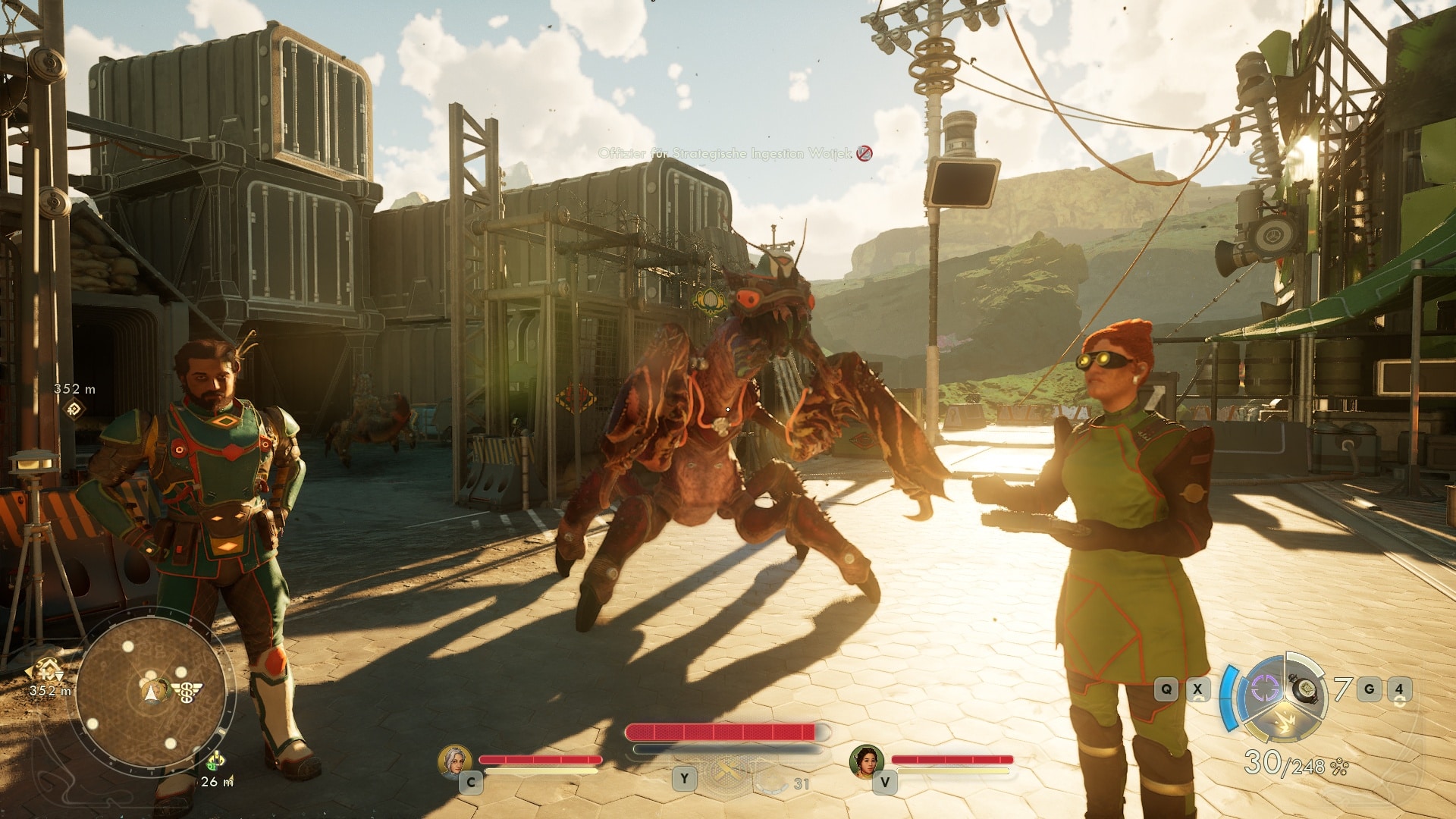
It’s not just these obscure characters and their stories that linger in the memory after the game – it’s also the backdrops against which they take place. While the first part of the game was criticized for its somewhat monotonous levels, Obsidian now offers varied and often visually stunning worlds – from brightly colored jungles, ice deserts, and mountain formations bathed in eternal pastel-colored twilight to magnificent Art Deco monasteries, winding spaceships, and space stations cobbled together from scrap metal.
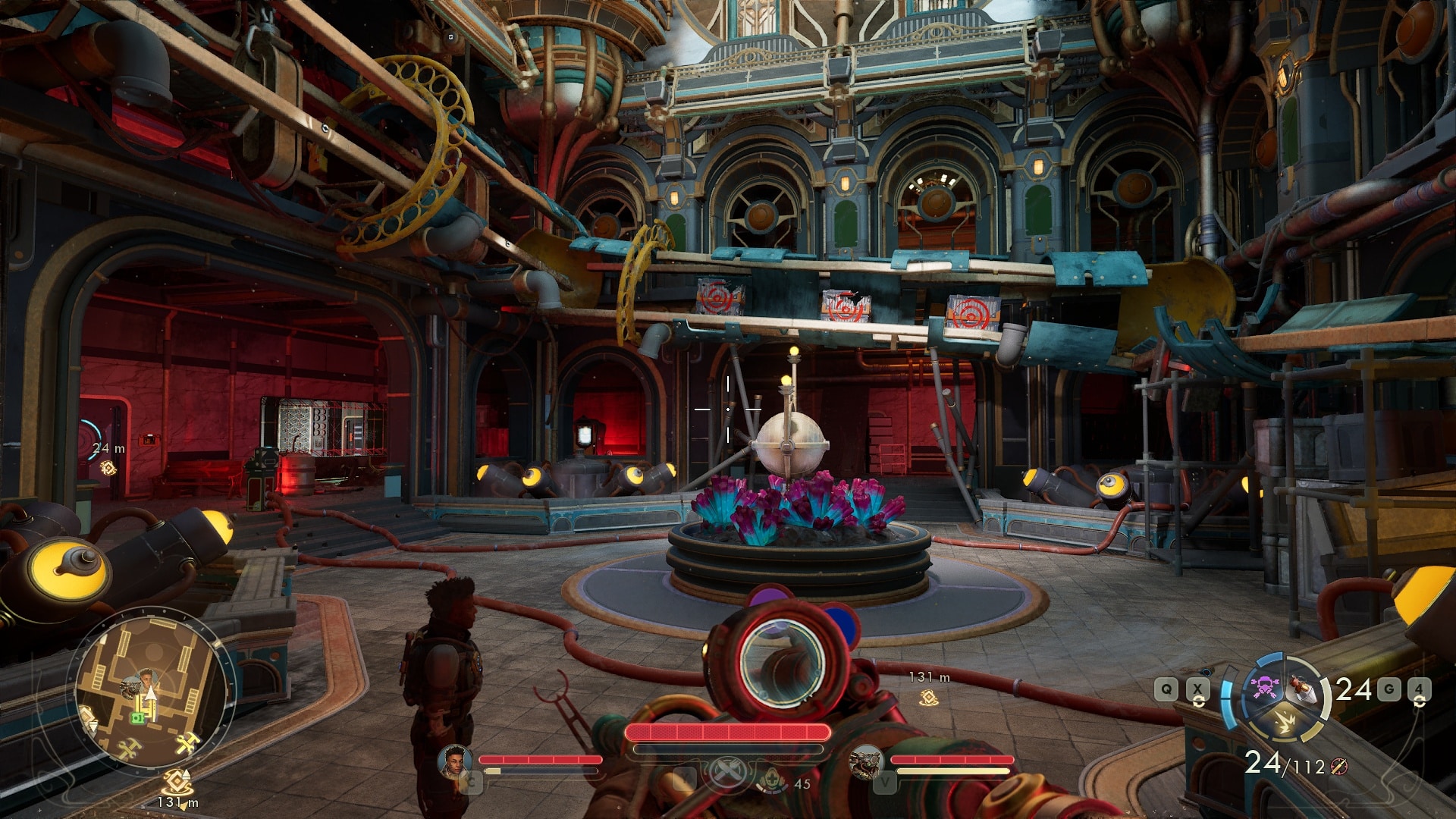
The game world is accompanied by an atmospheric soundtrack: Not only the orchestral music, but above all the three in-game radio stations of the political factions provided us with many catchy tunes and laughs:
- Protectorate Radio broadcasts marching music hymns of praise for brainwashing, operas, and propaganda detective radio plays.
- Auntie’s Choices corporate radio scores with jazz numbers that promote the consumption of cigarettes, candy, and sleeping pills.
- The Order Radio broadcasts mathematics lectures accompanied by minimal music.
We owe many bizarre moments to this radio program: Fighting giant spiders with an electric shock gun in a candy-colored alien world while listening to a lecture on the calculation and purpose of prime numbers is one of the most memorable moments of our gaming career.
In addition to the presentation of the game world, its scope has also increased significantly compared to the first part: Previously limited to two planets, several moons, and a few space stations, we now travel to four full-fledged celestial bodies, or at least their fairly large hub worlds, separated by loading screens.
And while the main missions in The Outer Worlds 2019 could be completed in 15 hours, we spent 45 hours on the main quest line and a relatively small number of side missions in our test. If you want to do everything, you should plan on 50 to 60 hours.
Complex or confusing?
However, this multitude of worlds, characters, and storylines peppered with political intrigue does come with one problem: at some point, it becomes confusing. First, we work for the Earth Directorate against the Protectorate and the Order of Ascension, then the Order splits from the Protectorate and we help their Math Priests fight against the corporate soldiers of Auntie’s Choice.
But suddenly we’re also getting orders from the latter. We recruit followers from all factions for our crew anyway, which causes conflicts of interest for some. Towards the end of the game, we had increasing problems distinguishing between friend and foe in mass combat scenes.
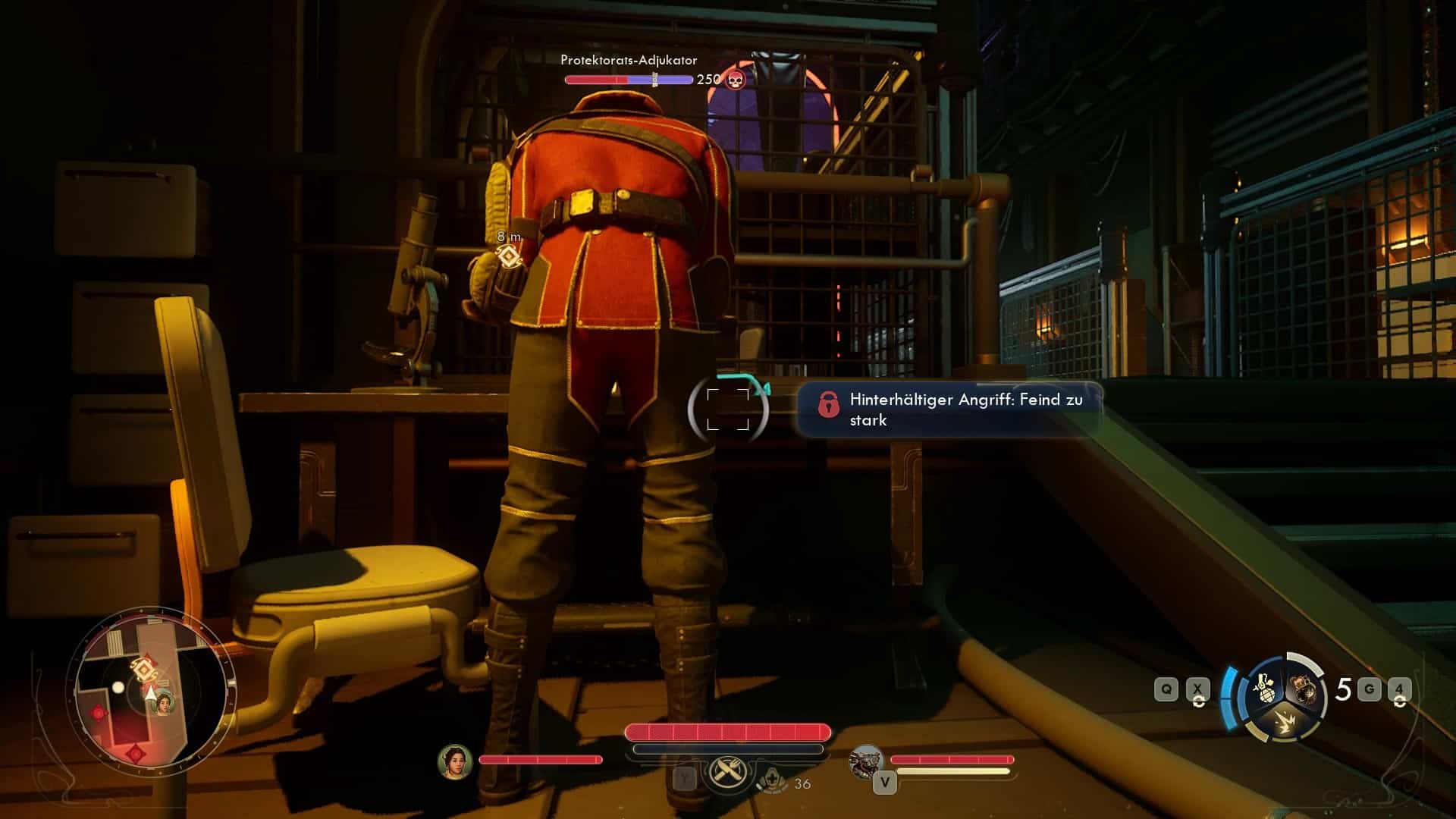
This isn’t helped by the fact that, despite all the humor and intrigue, the main storyline lacks a bit of compelling suspense. Towards the end of the main quest in particular, the plot thins out further and gives way to an increasing series of similar tasks (repair this device – activate that device – insert the fuse into this device) and more and more mass shootouts against enemy mobs. So very similar to its predecessor.
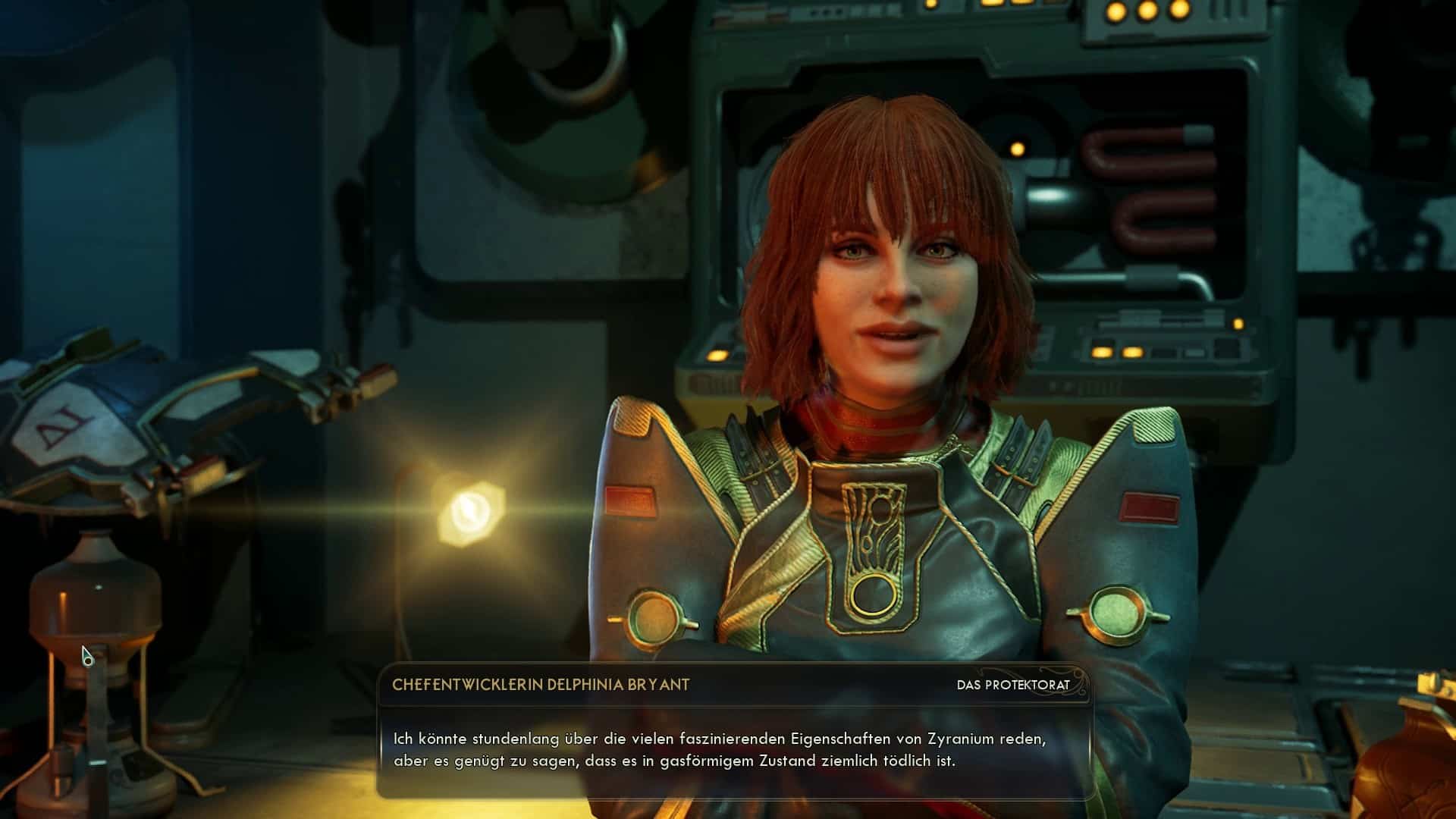
Speaking of shootouts: The Outer Worlds 2 has also taken a significant step forward in terms of shooter gameplay. Thanks to rocket jump boots and other speed-enhancing armor pieces, the combat feels noticeably smoother and faster than in the previous game.
In general, the equipment, which was still modest in the previous game, now offers a much wider selection. This applies not only to the weapons, which range from the Chain Lightning Shotgun to the Bio-Glibber Spray Gun to the Battle Axe with a circular saw blade.
The armor and helmets also offer a number of additional functions, such as noise reduction when sneaking, temporary invisibility, or electric shocks against melee attackers. In addition, all items can be modified at workbenches.

Yes, the enemy AI is still rather modest: you’ll hardly find any tactically sophisticated flanking in shooter battles, and in stealth passages we often stood almost on top of enemies without them noticing us.
And yes, the default difficulty level is again quite low – but it can be changed at any time and increased or decreased in great detail in the settings using various target assistance options. Here, too, The Outer Worlds 2 gives everyone a choice.
Occasionally, minor bugs occurred during testing: After a boss fight, the carcass of the defeated crab monster could only be searched after reloading, and after another boss, the elevator that takes us out of the area was missing, but this also disappeared after reloading. In very rare cases, the game crashed to the desktop when starting or exiting. However, none of these bugs seriously disrupted the flow of the game.
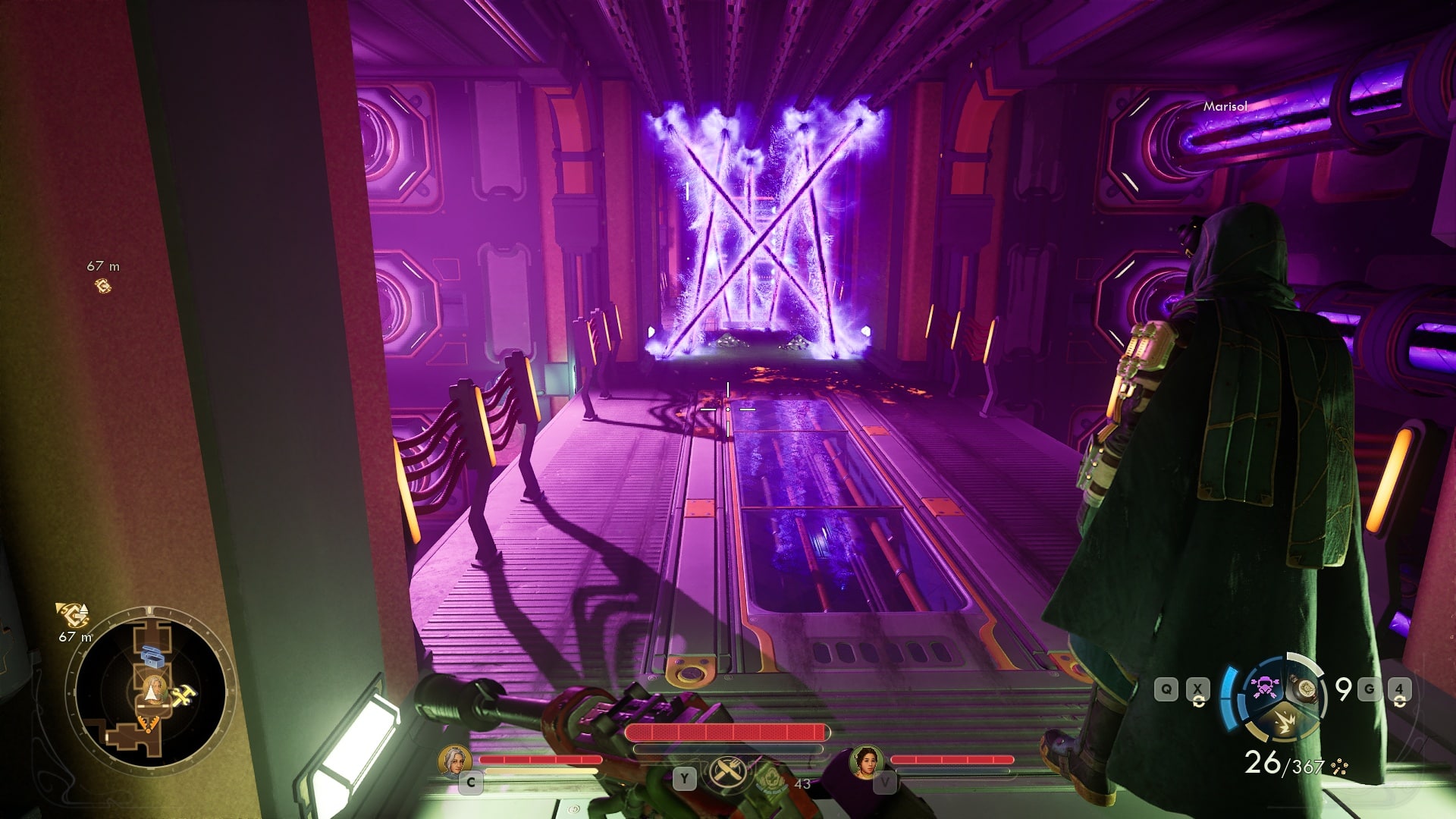
The performance of the Unreal Engine 5 used only rarely suffered from glitches, for example when hardware ray tracing was activated. Our tip: Turn off this feature, as it not only consumes a lot of power, but also currently leads to unsightly artifacts in the shadows.
With The Outer Worlds 2, Obsidian builds on the strengths of its predecessor and eliminates many weaknesses. Admittedly, the narrative and gameplay do falter somewhat in the finale of the main quest. But perhaps it would be unfair to a game that is so focused on playful and narrative freedom to view it as a straight line from A to B. The journey and its twists and turns are the destination here, and we are sure that we will continue to stroll along this path for a long time after the end.
Editor’s conclusion
The Outer Worlds 2 saves me from a shocking dilemma that I only discovered as a working adult: time is finite. Especially one kind of time: free time. Although I love role-playing games, I play them less and less. For two years, I’ve been putting off Baldur’s Gate 3 because I know that if I start playing it, the next year will be gone. Obsidian’s sci-fi RPG hits the sweet spot between the very short first Outer Worlds and (brilliant) time-consuming games like Elden Ring. In its intense 45 hours, the game often made me laugh and marvel—and always gave me the feeling that I was in control. For me, Obsidian’s approach is role-playing at its best, and I desperately want more of it!
It’s a shame, of course, that the somewhat thin storyline and disappointing ending mean it’s “only” a very good game and not a masterpiece. And yet The Outer Worlds 2 has taken a clear step forward compared to its predecessor.
Amidst all the Borderlands, Fallouts, and Starfields on the market, it has developed exactly what it enables its characters to do: a personality all its own.

